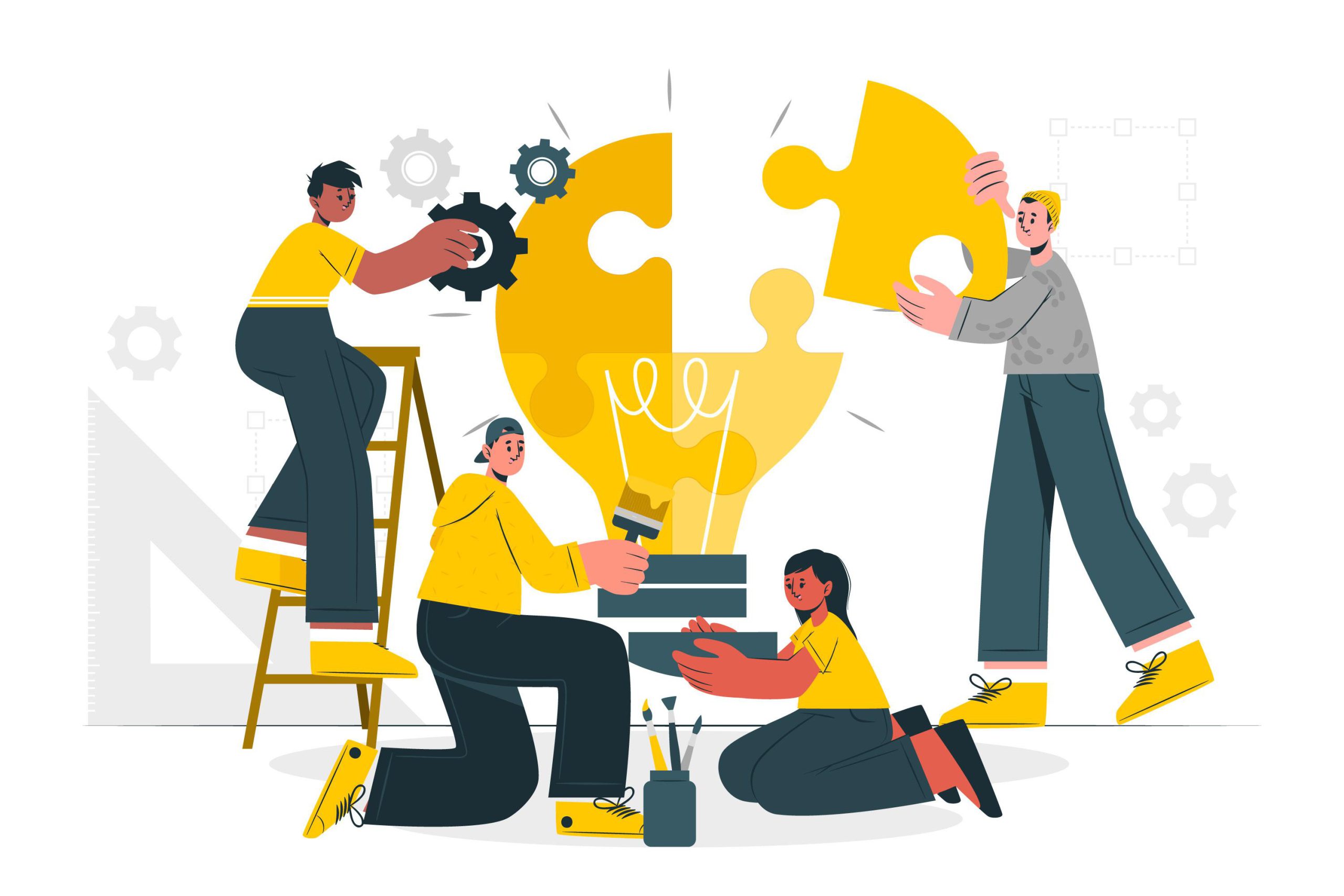Organizations constantly struggle to remain ahead of the curve in an environment where disruptive technologies and shifting consumer expectations are becoming increasingly common. Design thinking has emerged as a new method to problem-solving that can survive in this dynamic environment. Design thinking is not simply a catchphrase; it is a way of thinking that encourages cooperation, empathy, and invention. In this blog article, we’ll examine the fundamentals of design thinking and how it may transform how we approach issues and find original solutions.
What is Design Thinking?
A method to problem-solving known as “design thinking” puts people at the centre of the process. Though it began in the field of design, it has since spread to a number of academic fields and commercial sectors. At its core, design thinking promotes a thorough comprehension of user needs, motivations, and obstacles, which forms the basis for developing significant and useful solutions.

The Design Thinking Process
A cyclical, iterative process with numerous steps is what defines design thinking. Although there are various models, they usually have the same basic structure:
- Empathize: Having empathy for the users and having a thorough understanding of their needs, wants, and pain areas is the first step. To collect both qualitative and quantitative data, this entails conducting surveys, observations, and interviews.
- Define: The insights gleaned from the empathy phase are combined in this stage to pinpoint the main issue or challenge. It is critical to reframe the issue with the requirements and goals of the users in mind.
- Ideate: The ideation phase is all about coming up with a tonne of concepts, fostering unbridled creativity, and thinking creatively outside the box. Mind maps, brainstorming sessions, and other innovative methods are used to explore various options and produce a wide range of answers.
- Prototype: The emphasis then moves to developing concrete representations of those notions once the most promising ideas have been chosen. Simple sketches, interactive models, and even computer simulations are all examples of prototypes. The objective is to swiftly realise concepts and receive feedback.
- Test: Real users are used to test the prototypes in this phase in order to obtain feedback, confirm presumptions, and improve designs. This iterative feedback loop enables ongoing development and guarantees that the final product meets consumer expectations.
- Implementation: The last step in the design thinking process is to finally implement the best idea based on the feedback from the testing stage.
Key Design Thinking Principle
- Design thinking is based on a set of guiding principles that inspire innovation and creativity. These principles include, among others:
- Human-centered: Design thinking puts users’ wants and experiences first, guiding the development of solutions that emotionally connect with them.
- Iterative: Because the process is iterative, adjustments may be made continuously based on feedback and new information discovered along the way.
- Collaborative: To tap into collective intellect and unlock creative solutions, design thinking promotes cross-functional cooperation and a diversity of viewpoints.
- Action-Orientation: Design thinking places a strong emphasis on the value of doing and building real prototypes in order to bring concepts to life and test presumptions.
- Tolerance for Ambiguity: Design thinking accepts ambiguity and uncertainty because it understands that they are essential components of the creative process. Design professionals are encouraged to embrace innovation and learn from mistakes.
Design Thinking’s advantages
- Adopting design thinking can have a wide range of positive effects on people, businesses, and society at large.
- Innovation: Design thinking facilitates the development of innovative and disruptive products that meet unmet requirements and open up new opportunities by concentrating on human needs and experiences.
- Customer happiness: A thorough understanding of users’ demands makes it more likely that the finished goods or services will strike a chord with consumers, increasing their satisfaction and loyalty.
- Enhanced Collaboration: Design thinking fosters cross-pollination of ideas and views by encouraging collaboration between teams and departments.
- Agility: Because design thinking is iterative, organizations may react swiftly to shifting market demands and modify their strategy as necessary.
- Design thinking equips people with a problem-solving perspective, enabling them to approach problems in novel ways and come up with workable solutions.
A strong foundation for addressing difficult issues and stimulating creativity is provided by design thinking. Empathy, cooperation, and iteration are three strategies that businesses may employ to open up new opportunities and develop solutions that have real value for their users. Design thinking has the potential to be a revolutionary force, empowering us to address problems and create a better future in a world where creativity is the key to success. So let’s adopt this way of thinking and unleash our creativity to create a society where issues are perceived as opportunities and solutions are created with the needs of people in mind.
